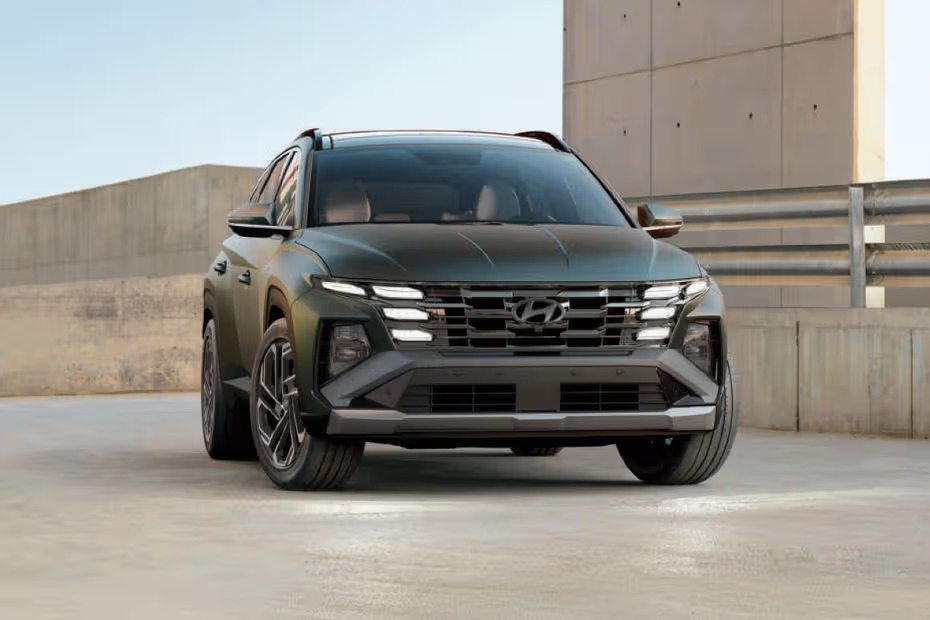When consumers set out to buy a new SUV, their attention often turns to the obvious — horsepower, towing capacity, fuel economy, tech features, and maybe even curb appeal. But what about the subtle things, the parts of ownership that sneak up on you after a few months or a few thousand miles?
One of the most underestimated elements of a vehicle’s quality is something you won’t see on a spec sheet, won’t test on a dealership lot, and won’t know until you’ve logged real miles: how quiet and structurally solid the cabin remains over time. More specifically, how silent — or not — the dashboard is after 10,000 miles of real-world use.
Dashboard rattles, buzzes, creaks, and ticks may sound like minor inconveniences, but they’re more than just background noise. They signal something deeper: the quality of engineering, the materials used behind the scenes, and how much (or how little) automakers think about your ownership experience past the break-in period.
A car can feel solid when it’s new, but the true test of craftsmanship is how it holds up over time — when plastic expands and contracts, when suspension components start to transmit more road texture into the cabin, and when daily use begins to test the precision of interior fitment.
In today’s competitive SUV landscape, the difference between models can be razor-thin. Many have similar drivetrains, infotainment systems, and safety tech.
So what separates a “good” SUV from a truly “great” one over time? Often, it’s the absence of noise. A dashboard that stays silent under pressure, vibration, and mileage creates a feeling of confidence and care.
It tells the driver: “This was built to last.” On the flip side, a dashboard that begins to buzz and rattle with every bump quickly sours the experience, no matter how good the car is mechanically. That constant, subtle sound becomes the soundtrack of disappointment — a daily reminder that corners were cut.
This article dives into that underappreciated world of long-term interior refinement. We’ve broken down the SUVs into two categories: five that remain impressively silent after 10,000 miles, and five that develop annoying dashboard noises much too soon.
These are not just one-off issues; they’re patterns observed by owners, mechanics, and long-term testers. From engineering philosophies to material choices, we’ll explore why some dashboards stand the test of time while others fail to hold their peace.
So, whether you’re an auto enthusiast, a daily commuter, or a family shopper looking for peace on the road, consider this a guide to the structural integrity you won’t find in flashy brochures or test-drive impressions.
Because when the new-car smell fades and the reality of everyday driving sets in, it’s not just the engine or the leather seats you’ll notice — it’s whether your dashboard stays quiet or becomes the most annoying passenger in the car.
Also Read: 5 Cars That Keep Their Cool In Summer And 5 That Turn Into Ovens
5 SUV Dashboards That Never Rattle (After 10,000 Miles)
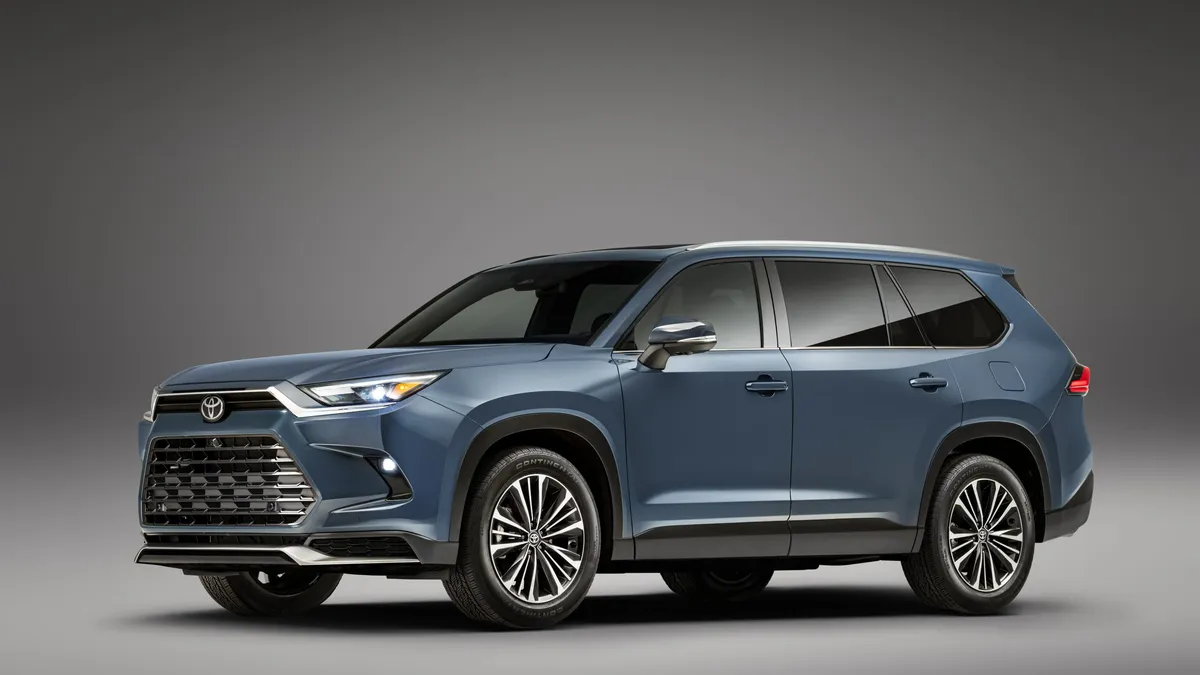
1. Toyota Highlander
The Toyota Highlander is a shining example of how engineering diligence and practical design choices can pay off in long-term durability.
While the Highlander doesn’t aim to wow with avant-garde interiors or ultra-luxury finishes, it executes the basics with near-flawless consistency. The dashboard, in particular, is one of the most robust in the segment.
Toyota’s engineers prioritize long-term ownership satisfaction, and this extends to how interior components are mounted and reinforced.
Behind the visible dash are cleverly placed metal brackets and structural foam inserts that prevent unwanted flexing, which is one of the root causes of rattling as a vehicle ages. After 10,000 miles, most Highlanders remain just as silent as they were on day one — and that’s not by accident.
Moreover, Toyota makes deliberate material choices that favor durability and acoustic performance over flash. Instead of using brittle plastics or excessive layering that might look good in a showroom but shift or creak with use, the Highlander keeps its dashboard architecture fairly uniform.
Panels are tightly fastened with minimal variance in gap tolerances, which significantly reduces the chances of vibration-induced noise.
The dash’s integrity is enhanced by the use of multi-piece molding designs that reduce stress points, especially around areas of frequent interaction like the infotainment system or HVAC controls.
Even in base trims, you won’t find the buzzing screens or clicky bezels that plague some rivals. The real-world implications are profound — the cabin feels put together, unshaken by time or terrain.
Driver reports consistently highlight how the Highlander manages to feel like new well into ownership. This isn’t a platform where dashboards start groaning when the suspension is loaded or potholes appear.
Whether you’re commuting through the city, climbing over mountain passes, or taking a cross-country road trip, the Highlander’s dashboard remains serene and solid.
That tranquility becomes part of the ownership experience — you don’t just hear the silence; you feel the confidence it conveys. It’s a form of engineering honesty, and for families or individuals who expect their vehicle to age gracefully, the Highlander is one of the safest bets on the market.
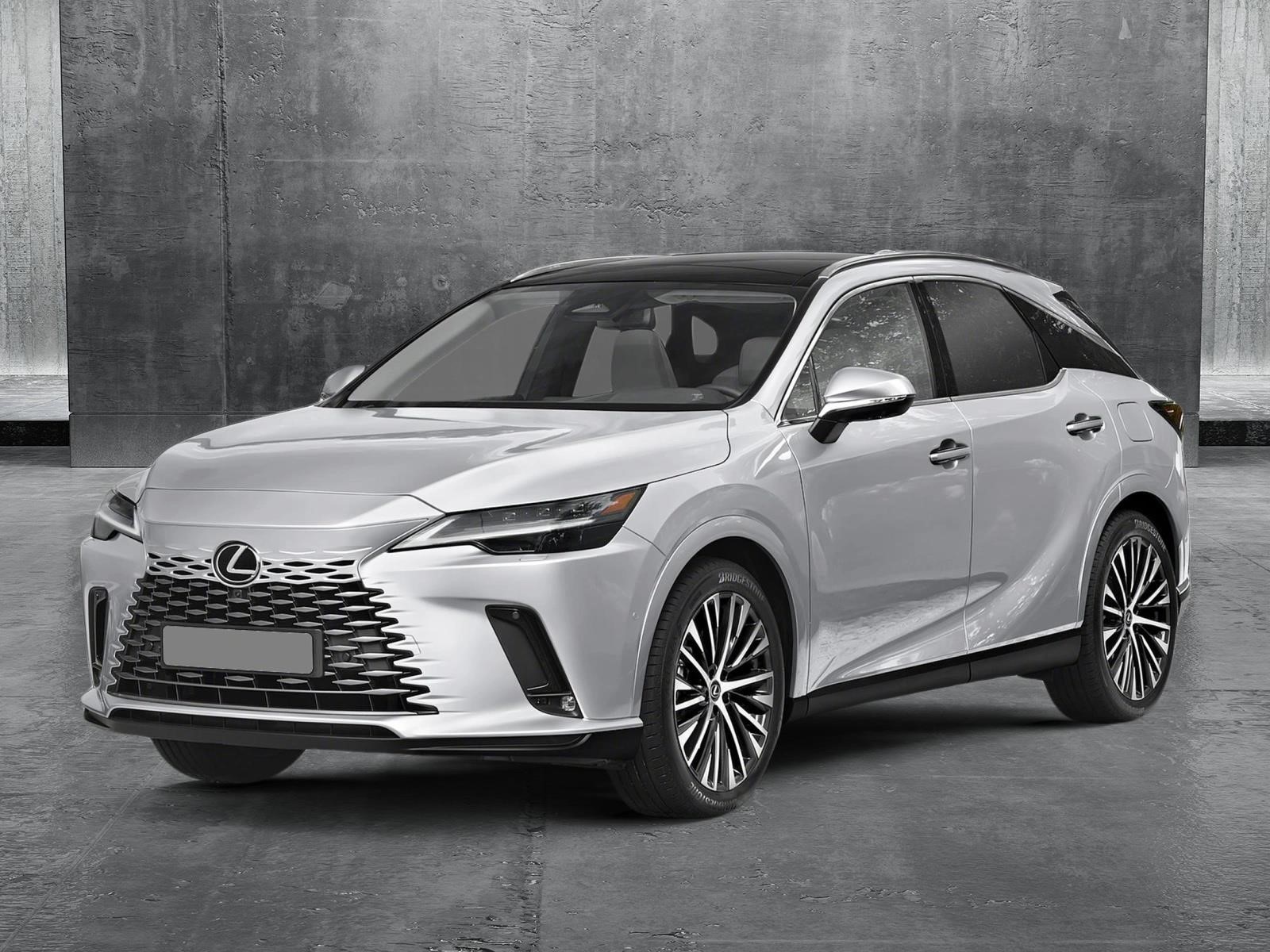
2. Lexus RX
Lexus has long been associated with interior refinement, and the RX exemplifies that identity down to its core structure, especially the dashboard. From the moment you sit inside an RX, the cabin whispers craftsmanship. But it’s not just the leather stitching or ambient lighting that impresses — it’s the way everything holds up after thousands of miles of driving.
Even after exposure to road vibrations, seasonal temperature changes, and varied driving conditions, the dashboard in the RX exhibits almost no signs of aging.
Lexus employs a highly disciplined approach to component installation, using laser-guided alignment systems and dual-checking procedures on the factory line to ensure that every element of the dash is precisely mounted and stress-free.
What truly sets the RX apart is the layering of NVH (Noise, Vibration, Harshness) countermeasures integrated directly into the cabin’s bones.
Beneath the dash surface, Lexus uses thick sound-deadening material between structural elements and trim. These materials not only reduce cabin noise but also serve as a buffer that minimizes micro-movements — the tiny shifts between plastic parts that eventually cause rattles.
The dashboard isn’t just designed for beauty or ergonomics; it’s engineered as part of a complete system that includes the firewall, the center tunnel, and the bulkhead. As a result, even when pushed hard on mountain roads or subjected to stop-and-go urban driving, the RX dash remains as immovable and quiet as granite.
This level of solidity matters because it reflects Lexus’s commitment to delivering luxury that lasts, not just luxury that looks good at first.
For buyers who choose the RX for its comfort, silence is non-negotiable. They expect a vehicle that isolates them from the chaos of the outside world, and a rattling dash would shatter that illusion instantly.
Fortunately, Lexus delivers on this front with surgical precision. Owners often remark on how the RX continues to feel “new” even at 20,000 or 30,000 miles, and the dashboard plays a huge part in that perception. It’s one of the few SUVs where luxury isn’t just seen or felt — it’s heard, or more accurately, not heard, over the life of the vehicle.
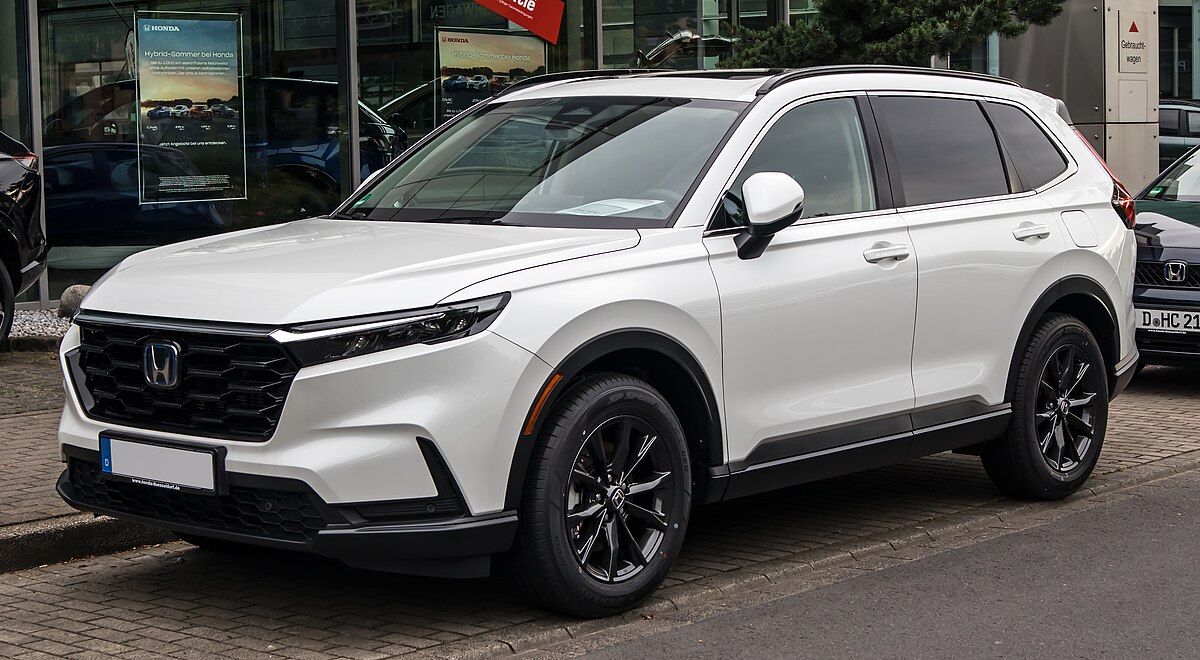
3. Honda CR-V
The Honda CR-V might not carry the premium price tag of a Lexus or the broad frame of a Highlander, but it punches well above its weight when it comes to cabin integrity. Among compact SUVs, few can match the CR-V’s reputation for long-term structural soundness, and its dashboard is a standout feature in this regard.
After 10,000 miles, the CR-V’s dash remains firmly in place, with minimal signs of panel loosening or vibration-related noise.
This is especially impressive considering that the CR-V is often used as a daily workhorse — enduring stop-and-go traffic, speed bumps, tight corners, and constant door slams. Its ability to stay silent through it all speaks volumes about Honda’s design priorities.
Honda has long been revered for its meticulous approach to vehicle architecture. In the CR-V, the dash components are not just clipped together; they’re part of a deeply integrated design that starts with the vehicle’s reinforced unibody chassis.
Honda utilizes ultra-high tensile steel in key areas, ensuring a rigid frame to which interior elements are affixed. This level of rigidity minimizes flexing throughout the car, including the dashboard’s mount points.
In addition, every CR-V dashboard features a blend of soft-touch materials and acoustic foam, which absorbs high-frequency vibrations before they ever reach the surface. Even the infotainment and HVAC bezels, common rattle points in other vehicles, are installed with vibration-damping grommets.
Over time, this design proves its worth. CR-V owners frequently note that, despite putting tens of thousands of miles on their vehicles, the cabin still feels “tight” — no squeaks, no buzzes, no plastic-on-plastic noise when hitting uneven pavement.
That feeling of mechanical cohesion enhances the CR-V’s appeal, especially among commuters and families who log significant mileage annually.
Whether you’re on a school run, a long highway trip, or simply navigating pothole-ridden roads, the CR-V manages to hold its composure.
The dashboard’s silence is not just a passive feature; it actively contributes to the vehicle’s perception of quality. In a class where many competitors start to show their age quickly, the CR-V stands out as an SUV that keeps its polish, both visibly and audibly.

4. Mazda CX-5
Mazda’s CX-5 is often described as the “driver’s choice” in the compact SUV category, and while its performance credentials get most of the headlines, it’s the interior durability, specifically the dashboard’s solidity, that helps it age with distinction. From the outset, the CX-5 feels like it belongs in a higher price bracket.
The dash is covered in soft-touch materials, accented with satin metal trim and stitched inserts that elevate the visual experience.
But more importantly, everything feels anchored — nothing wobbles, flexes, or creaks, even under hard braking or sharp cornering. After 10,000 miles, this cohesion doesn’t fade.
Instead, the cabin feels as precise as a sealed vault, unmarred by the typical wear and vibration-induced buzzes that creep into lesser interiors. One reason for this is Mazda’s holistic approach to engineering.
The company adheres to a “Jinba Ittai” philosophy — the idea of oneness between car and driver — and that applies to cabin structure as much as handling. The dashboard is reinforced with additional cross-members and high-durability mounting points that distribute structural stress evenly, reducing the chance of localized tension that causes rattles.
Mazda also uses proprietary foam and insulation materials behind the dash to eliminate sympathetic vibrations — the kind that travel from the suspension and engine bay into the cabin through subtle resonance. It’s a level of detail you don’t often find outside of the luxury class.
Drivers consistently report that the CX-5 continues to feel composed and silent well beyond the break-in period. This is no small feat in a segment where bumpy roads and the daily grind tend to loosen things up quickly.
The firm-yet-controlled ride further enhances the dash’s stability — it’s firm enough to reduce body motion but not so harsh that it introduces excessive vibration.
Ultimately, the CX-5’s dashboard doesn’t just serve its functional purpose; it’s a cornerstone of the vehicle’s quiet confidence. It reinforces the idea that quality isn’t just how a car looks — it’s how it stays together.
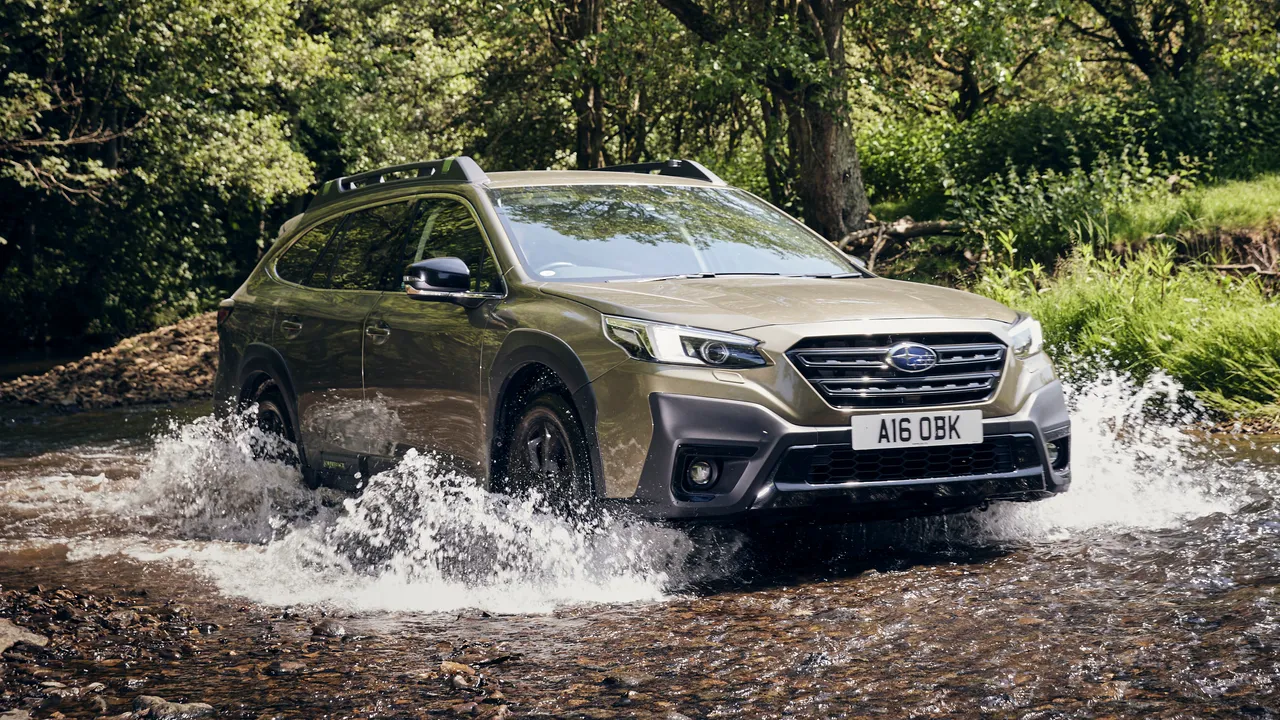
5. Subaru Outback
While the Subaru Outback blurs the line between wagon and SUV, its utility-focused design and off-road capability land it squarely in the SUV camp for many buyers. What’s truly impressive about the Outback, though, is how it manages to combine ruggedness with interior durability, particularly in the dashboard.
After 10,000 miles, including exposure to rough terrain, gravel roads, and cold-weather abuse, the Outback’s dashboard remains impressively composed. There are no phantom rattles, no buzzing HVAC ducts, no creaking infotainment mounts.
Subaru has engineered the dashboard to withstand not just daily commuting, but the kind of real-world adventuring that often destroys lesser cabins.
The secret lies in Subaru’s symmetrical all-wheel drive layout and its robust chassis engineering. The low center of gravity and flat engine design result in a balanced vehicle that experiences less torsional stress. That balance reduces the likelihood of interior components shifting out of alignment — a key factor in keeping dashboards quiet over time.
Subaru also adopts an unpretentious but highly functional interior design strategy. The dashboard in the Outback avoids excessive styling complexity, which means fewer decorative panels, clips, and joinery — all common sources of rattles in more design-heavy vehicles. Instead, what you get is a solid, purpose-built dash that’s bolted down with intention.
This design pays dividends for drivers who push their Outbacks beyond the pavement. Whether it’s traversing rutted forest roads or enduring icy city commutes, the Outback maintains its cabin composure. Even temperature extremes, which cause expansion and contraction of materials, don’t seem to affect the dashboard’s integrity.
Owners repeatedly praise how “quiet” and “tight” the dash remains, even when the suspension is fully loaded or the car is navigating washboard roads.
In the end, Subaru delivers on the promise of long-term rugged refinement. The dashboard, though not flashy, is one of the most dependable in the segment — a silent witness to all the miles and memories yet to come.
5 SUV Dashboards That Buzz After 10,000 Miles

1. Jeep Cherokee
The Jeep Cherokee is often positioned as a rugged yet civilized SUV — a vehicle that offers genuine off-road ability without sacrificing daily comfort. On paper, it succeeds. It has a strong visual identity, trail-rated trims, and an interior that appears upscale at first glance.
However, beneath that surface lies a troubling reality for long-term owners. After around 10,000 miles, many report an uptick in dashboard noises, including rattles around the air vents, buzzing near the touchscreen, and vibration sounds when driving over uneven pavement.
These aren’t just isolated incidents — they’re frequent enough to reveal a systemic issue in how the dashboard is designed and assembled. Unfortunately, the Cherokee’s interior is a classic case of aesthetic ambition outpacing structural execution.
One of the core problems stems from the use of varied materials across the dash’s surface — a combination of soft-touch padding, hard plastic, faux metal trim, and a large, freestanding infotainment screen.
While this may create visual interest, it also introduces multiple friction points where components of different densities expand, contract, and rub against each other over time.
In regions with seasonal temperature changes, these materials shift constantly, and without adequate reinforcement or acoustic damping, that movement translates into audible buzzes. The mounting brackets for the touchscreen and HVAC controls are especially vulnerable, often causing vibration noises even at moderate speeds.
These issues are compounded in Trailhawk versions, where stiffer shocks and larger tires transfer more chassis feedback into the cabin.
What makes the problem worse is that many of the noises are intermittent and difficult to replicate in a dealership service environment, leaving frustrated owners to live with them. Some resort to aftermarket fixes — foam tape, adhesive pads, or even DIY disassembly — just to achieve some level of relief.
But these are band-aids for a deeper wound: poor dashboard design integration. A rattle might seem trivial in isolation, but over thousands of miles, it chips away at driver satisfaction.
For an SUV that markets itself as a go-anywhere, do-anything vehicle, the Jeep Cherokee’s buzzing dashboard feels like a contradiction — one that turns every adventure into a reminder of what wasn’t built to last.
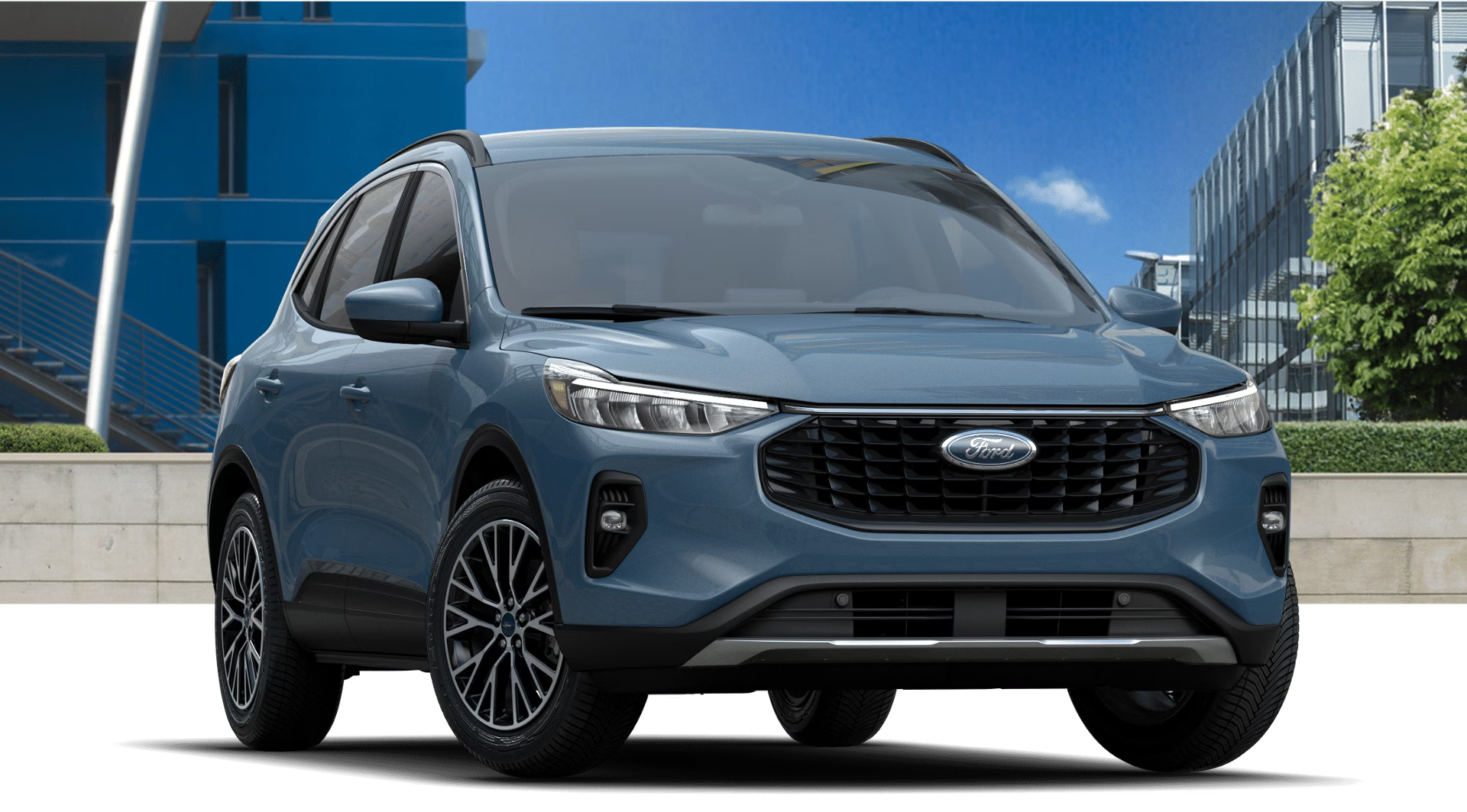
2. Ford Escape
The Ford Escape has been a volume seller for years, thanks in large part to its comfortable ride, competitive pricing, and well-designed tech interface.
But one area where the Escape consistently disappoints is dashboard integrity after extended use. After about 10,000 miles — sometimes even sooner — the dashboard begins to develop a series of audible quirks.
These usually begin as faint buzzing around the center console or infotainment bezel and progress into more pronounced rattles near the glovebox, defrost vents, or A-pillar areas. While the Escape delivers in terms of drivability and economy, it fails to provide the silent cabin experience that most buyers expect in a modern SUV.
Part of the issue lies in the Escape’s attempt to emulate a premium cabin aesthetic while still operating within a cost-controlled manufacturing framework.
The dashboard includes layered surfaces with gloss-black panels, chrome-look accents, and rubberized plastic — all visually engaging, but not always securely integrated. These design choices create potential “rattle zones,” especially when the vehicle endures bumpy roads, long commutes, or rapid temperature swings.
The Escape’s dashboard isn’t rigidly braced, and Ford’s use of lightweight clip-based assembly in certain trims results in panels that slowly lose their tension with wear and heat cycling. Over time, what was once a sleek and modern interior becomes a source of constant auditory feedback.
The experience is worsened by Ford’s infotainment housing design, where the screen bezel often becomes a hotspot for vibrations. Unlike flush-mounted systems used in more refined vehicles, the Escape’s infotainment unit tends to protrude slightly, and the supporting plastic lacks the stiffness required to eliminate motion noise.
Owners often report a sense of “dashboard looseness” after the vehicle’s first year, not catastrophic, but enough to break the illusion of quality.
For a vehicle that performs well on paper and is often praised in early reviews, the Ford Escape’s long-term cabin noise issues are a glaring blind spot. It’s a frustrating flaw in what could otherwise be a standout in the compact SUV space.

3. Chevrolet Equinox
The Chevrolet Equinox positions itself as a mainstream SUV choice with American comfort and dependable utility. It offers a cushy ride, practical cabin space, and a relatively intuitive layout. But dig deeper into long-term ownership reports, and a pattern emerges: the dashboard begins to betray its low-cost roots fairly quickly.
By the 10,000 to 15,000 mile mark, many Equinox owners begin hearing faint to moderate rattling, often beginning around the instrument panel and slowly radiating outwards toward the passenger side.
These aren’t isolated defects — they’re common, often occurring across multiple trims and model years, particularly in non-premium versions where hard plastics dominate the dashboard composition.
One of the biggest culprits appears to be the lack of damping materials between the dash’s layers. GM opted for a modular dashboard layout that prioritizes ease of assembly over long-term rigidity.
This means that pieces like the instrument cluster hood, center stack bezel, and passenger-side fascia are clipped into place rather than bolted or reinforced with high-density foam backing.
While this speeds up production and reduces manufacturing costs, it also creates conditions where the dashboard components are more likely to vibrate against each other when the body flexes or when driving over rough terrain. Over time, this leads to not just buzzing, but actual plastic-on-plastic creaking sounds that become impossible to ignore.
Equally frustrating is the vehicle’s insulation strategy, or lack thereof. The Equinox tends to transmit more road and suspension noise into the cabin than some of its Japanese or Korean rivals. This excess vibration naturally reaches the dashboard, where weakly mounted or thin plastic parts start to resonate audibly.
For owners who spend a lot of time commuting or on longer drives, this creates an annoying, persistent soundscape that distracts from the otherwise smooth ride. While the Equinox offers decent infotainment and comfort features, these dashboard buzz issues quickly erode the perception of quality.
For a brand that often talks about “professional grade,” this kind of build inconsistency feels like a misstep that could — and should — be addressed at the engineering level.
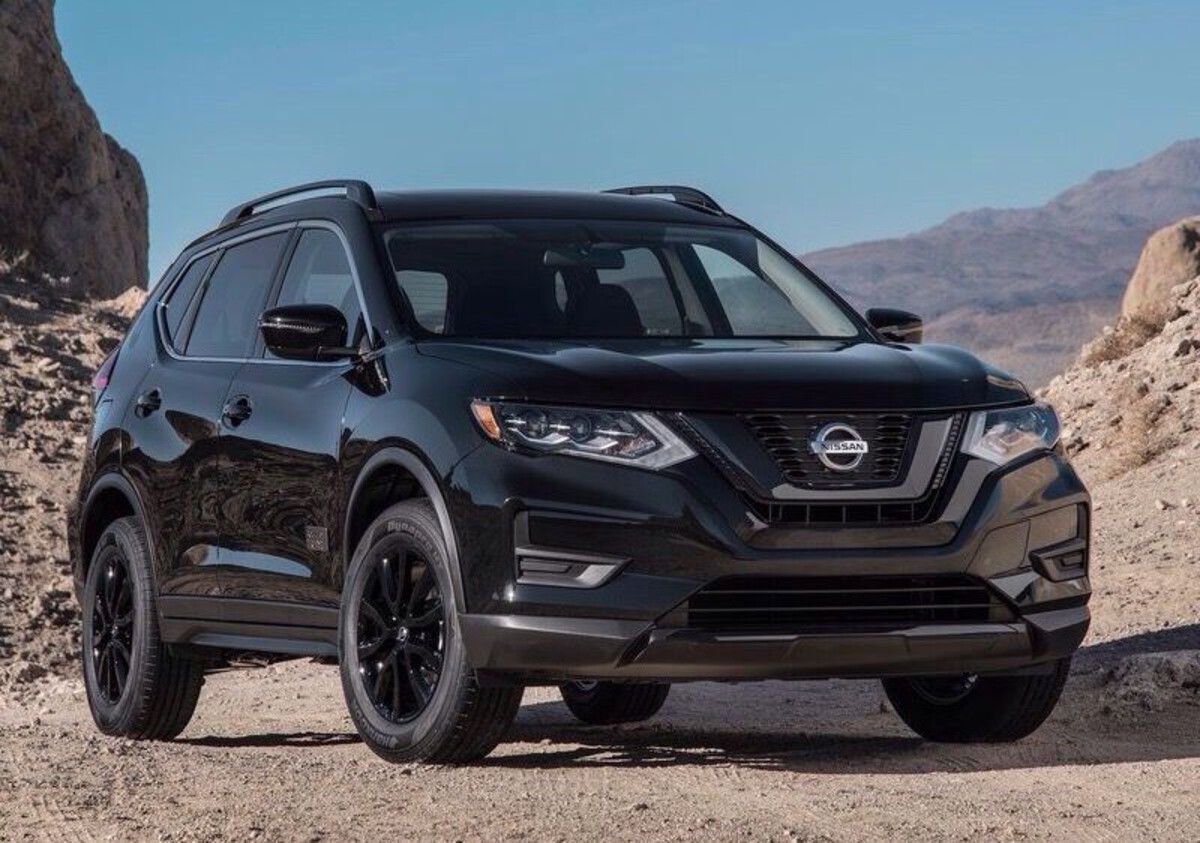
4. Nissan Rogue
The Nissan Rogue is one of the best-selling compact SUVs in America, but its interior build quality, particularly the dashboard, leaves much to be desired over the long term.
Initial impressions of the Rogue’s interior are often positive: a clean design, user-friendly interface, and spacious layout make it a practical family vehicle.
But once the miles start to add up, especially past the 10,000-mile mark, owners begin to notice a variety of intrusive noises that seem to originate from multiple parts of the dashboard.
These sounds range from high-pitched buzzes near the central touchscreen to deeper creaks and clicks coming from behind the glovebox or steering column. For a vehicle that sells itself as quiet and refined, the noise issue is both puzzling and disappointing.
The root of the problem lies in the Rogue’s reliance on low-density plastics and minimal internal bracing. In an effort to cut weight and reduce production costs, Nissan has used large molded pieces that are clipped into place with little room for error.
As the vehicle goes through daily driving stress and thermal expansion cycles, those clips begin to loosen slightly, allowing for micro-movements between components. These movements generate audible vibrations, particularly when the vehicle hits small bumps or accelerates aggressively.
The touchscreen mount is especially prone to this — many owners complain of a faint but consistent buzz that begins with slight pressure on the accelerator and disappears only when coasting.
Further compounding the issue is the Rogue’s suspension tuning. While the ride is soft and comfortable, it lacks the damping precision needed to isolate road imperfections. This means that even minor pavement inconsistencies transmit through the chassis and into the dashboard structure.
Without high-quality insulation or stiffening brackets to counteract the vibration, the dash becomes a sympathetic source of noise. Over time, the cabin experience deteriorates, even if the vehicle remains mechanically sound.
The Nissan Rogue, then, represents a frustrating contradiction: a sensible, practical choice that sounds far less refined than it should. For buyers who equate silence with quality — and many do — these noises feel like a betrayal of the trust they placed in the brand.
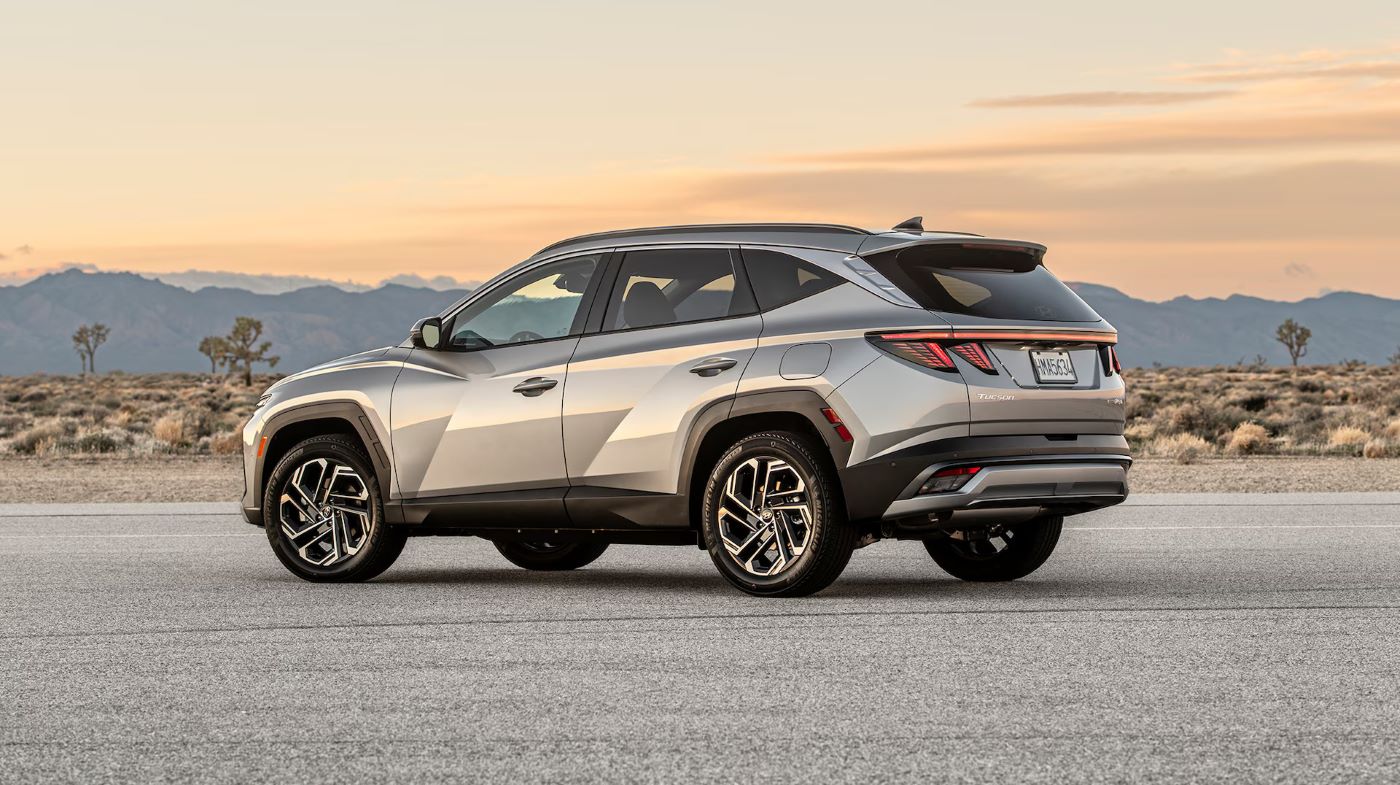
5. Hyundai Tucson (Pre-2022 Models)
Hyundai has made enormous strides in recent years, but earlier models of the Tucson, particularly those built between 2016 and 2021, struggle with dashboard integrity as they age.
While the cabin initially impresses with clean design, thoughtful ergonomics, and upscale textures, it starts to degrade after regular use. Owners commonly report rattles and buzzes emerging from the dashboard region around the 10,000–12,000 mile mark.
These sounds are most frequently heard around the defrost vents, center stack controls, and even the glovebox hinge area, and they become more prominent when driving over rough pavement or at higher speeds. While Tucson’s reputation for value remains intact, the soundscape inside the cabin begins to contradict its otherwise polished image.
The root cause seems to be a combination of two issues: inconsistent assembly tolerances and insufficient vibration damping. Hyundai’s interior panels in these models tend to be relatively thin and use minimal insulation behind the dash.
While this may help with weight savings, it leaves the dash vulnerable to the kinds of flex and stress that cause unwanted noise.
Additionally, the dashboard is highly modular, meaning that multiple sections — such as the trim around the HVAC controls, infotainment system, and side air vents — are installed as separate pieces. While this makes for easier manufacturing, it also introduces more seams and contact points where movement and vibration can cause buzzes over time.
The problem is especially pronounced in regions with variable weather, where material expansion and contraction occur frequently.
On cold mornings, for example, Tucson drivers often report creaks when starting the car or going over speed bumps. And on long summer drives, the combination of heat-softened plastic and road vibrations often results in a chorus of faint but persistent dashboard noises.
These sounds are not just inconvenient — they undercut the very sense of modernity and refinement that Hyundai worked hard to establish with these models. Thankfully, Hyundai addressed many of these issues in the completely redesigned 2022 Tucson. But for those driving older versions, the experience can be audibly disappointing.
Also Read: 5 Cars from the 2000s That Are Future Classics and 5 That Aren’t
At the end of the day, your SUV’s dashboard isn’t just a shelf for screens and buttons — it’s a structural and sensory cornerstone of the entire driving experience. After 10,000 miles, it becomes one of the most telling indicators of how well a vehicle was designed and assembled.
When the dashboard stays quiet, holds firm, and resists the inevitable rattles that plague so many competitors, it quietly affirms your choice as a smart, long-term investment.
But when it starts to buzz, creak, or vibrate, especially after such a short distance, it can drastically alter how you perceive your vehicle’s quality.
Think about it — every time you get in your car, you’re surrounded by the dashboard. It frames your field of vision, supports your interface with the vehicle, and literally surrounds you with either reassurance or regret. A quiet dash contributes to a calm, focused driving experience.
It allows the other elements of the car — the ride quality, the engine note, the comfort features — to shine through. But when the dashboard begins to betray its construction, that calm turns to distraction.
Even the best engine, the smoothest suspension, or the most sophisticated safety system can’t drown out the daily reminder that your cabin is slowly coming unglued.
The SUVs that performed best in our list — from the Toyota Highlander and Lexus RX to the Mazda CX-5 and Subaru Outback — share more than just quiet dashboards. They reflect a deeper commitment to craftsmanship and longevity. These vehicles were engineered with an understanding that ownership extends far beyond the first oil change or scheduled service.
They aren’t just reliable mechanically; they’re structurally dependable in the ways that most matter to drivers who spend years behind the wheel. These vehicles become trusted partners, not just transportation devices.
On the flip side, the SUVs that began to buzz — like the Jeep Cherokee, Ford Escape, and Nissan Rogue — illustrate how aesthetic ambition or cost-cutting measures can undermine the entire cabin experience. It’s not that these are “bad” vehicles outright.
Many of them offer strong features, decent powertrains, and attractive pricing. But when dashboards begin to rattle before the vehicle even sees its second set of tires, the confidence in that product begins to erode. It tells a story of compromise, of something that looked good but wasn’t truly built to last.
So what can buyers take away from all this? First, never underestimate the value of silence. It’s not just a luxury — it’s a marker of how thoughtfully your vehicle was built. Second, think long-term. Read reviews from owners who’ve had their cars for a year or more. Listen to their stories — the good, the bad, and the buzzy.
Lastly, demand more. If dashboard quality and long-term quietness aren’t being prioritized by manufacturers, they should be. Because when all is said and done, your dashboard will either fade into the background of your daily life or become the constant, irritating echo of design flaws you didn’t see coming.
In the world of SUVs, silence isn’t just golden — it’s the sound of excellence. Or more accurately, the lack of sound.

